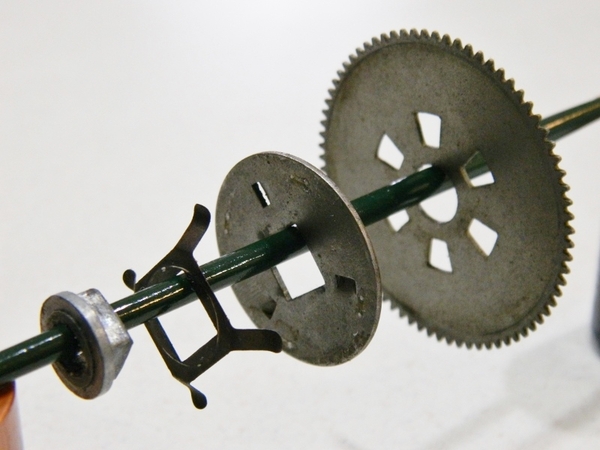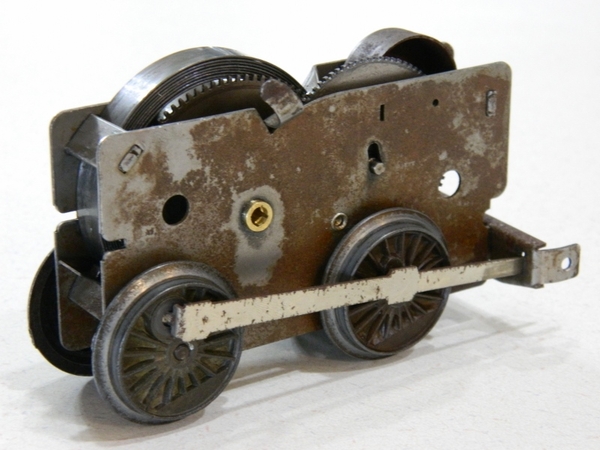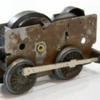Les, Marx windup motors can be grouped into two main types - ratchet motors and riser gear motors. The names refer to the different designs of the ratchets. A ratchet mechanism is needed to disengage the mainspring from the rest of the motor so it can be wound up. The ratchet motor is the early design, and as the name implies uses a pawl-type ratchet. The riser gear motor is the later design, and utilizes a gearset that is free to move upwards when winding the mainspring, disengaging a set of gears to disconnect the mainspring from the rest of the motor.
This is the ratchet parts out of a ratchet motor:
This is a riser gear motor. If you look above the drive wheel to the right, you will see a shaft sticking out of a slot in the motor. Winding the spring causes the gears and shaft to move upward in the slot, disengaging the mainspring from the drive wheels. Hence "riser gear" because those gear rise up when winding.
Some of my locos have two or three motors in them, so when you saw the mention of "dual riser gear motors" that just meant the locomotive had two motors in it.
As to your other question - what Marx loco had six wheels - there were two electric locos that had six drive wheels, the 333 and 1829 (I think that's it - electrics aren't my area of expertise). Now, what Marx Windup loco had six wheels? None. All Marx windups used motors with four drive wheels, and only drove through the front two wheels. I've modified a couple of Marx windup motors that have six drive wheels for my own projects. The "963" loco is one of those projects...
Hope that explains everything!








